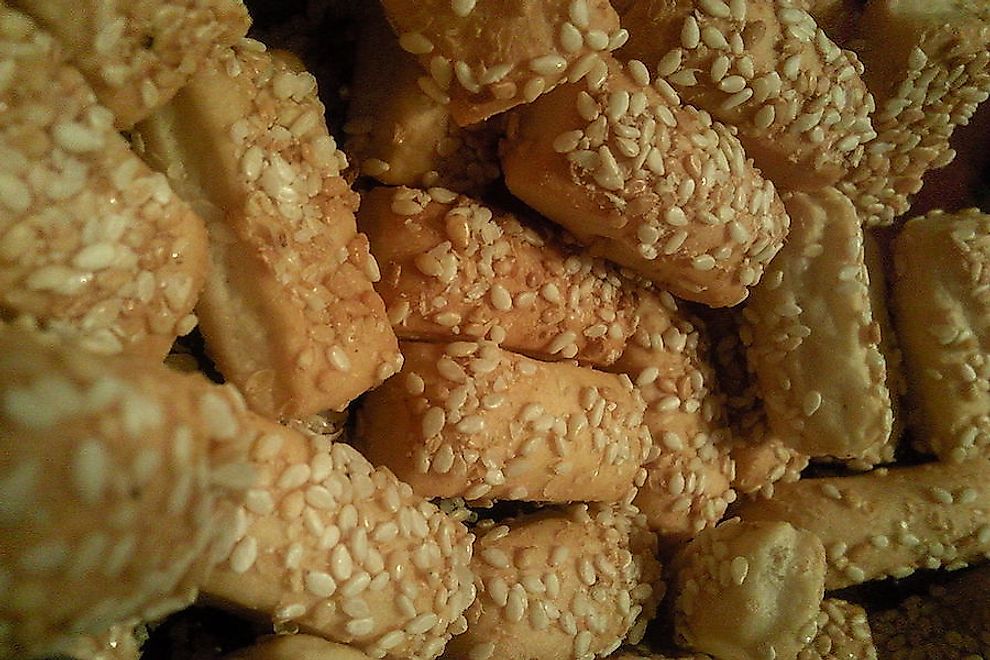Top Sesame Seed Producing Countries In the World

Sesame is a flowering plant that is cultivated for the edible seeds of the plant. The genus Sesamum has many species most of which are wild. The most common cultivated variety of sesame, the Sesame indicum, originated in India. In 2013, 4.2 million metric tons of sesame was harvested worldwide with India and China being the top producers of the crop.
Origin Of Sesame
The oldest oilseed crop known to humanity, sesame has many species of which most are native to sub-Saharan Africa while Sesame indicum is native to India. According to historical accounts, sesame was traded as early as 2000 BC between the Indian sub-continent and Mesopotamia. The crop finds mention as a medicinal drug in ancient Egyptian scrolls and was grown in Turkey at least 2750 years ago as per archeological reports. The popularity of sesame in the ancient world is due to the fact that it is a robust crop that can grow in a wide variety of environments. Thus, trade in sesame flourished since the ancient times.
Uses Of Sesame
Sesame has a rich, nutty flavor that is commonly used as an important ingredient in cuisines across the world. The decorticated sesame seeds are sold mainly to be used as a top coating of a number of baked goods in many countries. The dried whole sesame seeds are rich in calories containing 50% fat, 23% carbohydrates, 18% protein, 12% dietary fiber, and 5% water. The seeds are also used for oil extraction and the flour that remains after oil extraction is 35 to 50% protein. The flour is used as feed for livestock and poultry.
Cultivation Of Sesame
Sesame is a robust plant that can grow in many types of soils. However, the crop grows best in well-drained, fertile soils with neutral pH. High salt and waterlogged soils are not good for sesame cultivation. 90 to 120 frost free days are a typical requirement of the sesame plant. Warm climate favors a faster growth of the crop. The oil content of the plant is influenced by the photoperiod. The extensive root system of the sesame plants renders it as a drought-tolerant plant.
Dehiscence time of sesame varies and hence farmers cut the plants by hand and store them upright till the seed capsule bursts open. It is important to keep the small seed free of moisture and hence the harvested crop needs to be stored at 6% or low moisture conditions. The seeds are cleaned and hulled after harvesting and are passed through an electronic color-sorting machine that discards the discolored seeds. The seeds of consistent color are usually favored by customers and hence the need to sort seeds by color. Seeds that are off-size or immature are separately used for sesame oil production.
Production And Import Of Sesame
Although India and China are the top sesame producing countries in the world, the most productive sesame farms are located in Greece where 0.69 tons per hectare of sesame production was recorded in 2013. The white and lighter colored sesame seeds are produced commonly in West Asia, the Indian subcontinent, the Americas, and Europe. In China and southeast Asia, darker-colored sesame seeds are mainly produced. In 2010, more than a billion dollar worth of trade of sesame seeds was recorded. The largest sesame importer in the world is Japan since sesame oil is an important ingredient in Japanese cooking. China is the world’s second largest sesame importer. The US, Canada, the Netherlands, France, and Turkey are other major sesame importing countries.
Leaders In Sesame Production
| Rank | Country | Production (metric tonnes) |
|---|---|---|
| 1 | India | 890,000 |
| 2 | China | 626,000 |
| 3 | Nigeria | 580,000 |
| 4 | Myanmar | 540,000 |
| 5 | Tanzania | 420,000 |











